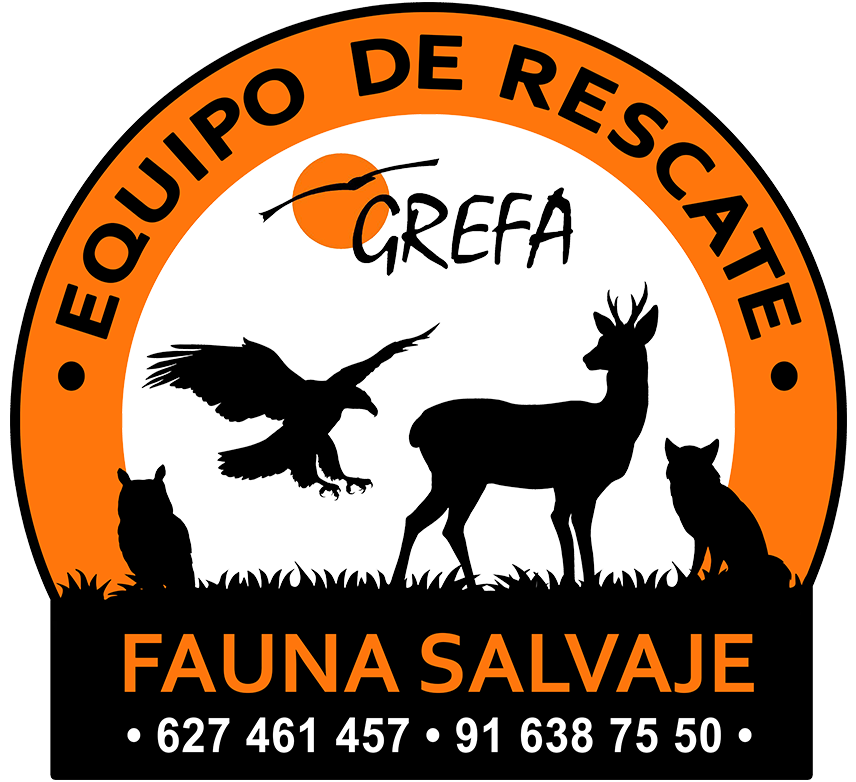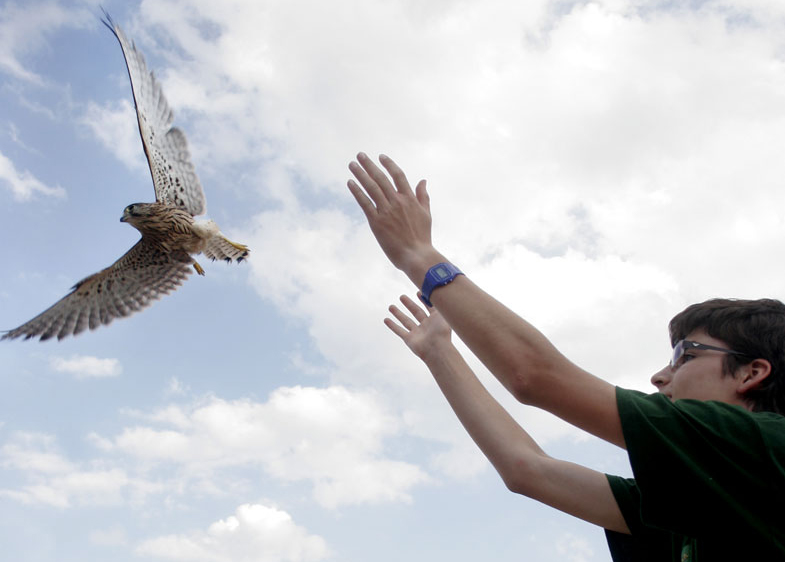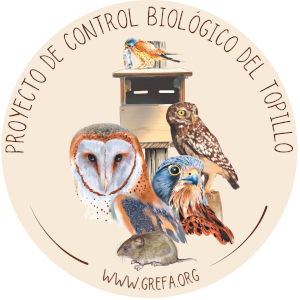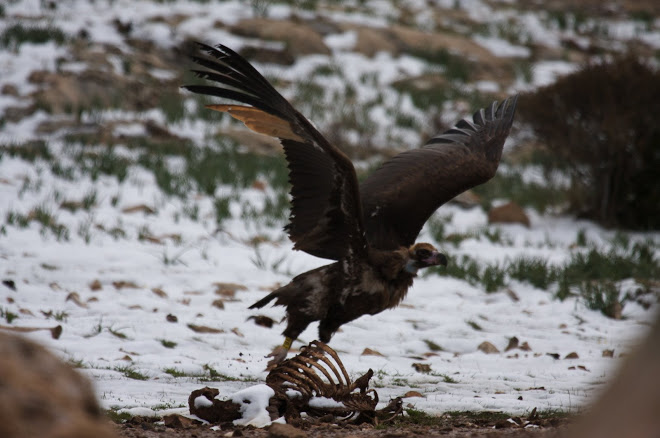
Five years after the first release of the Project of Reintroduction of Black Vulture in the Pyrenees.
Although five years have passed from the first releases in Alinya and soon after in Boumort, the project started some years before. The first proposal of reintroduction in the prePyrenees of Lleida was done at the beginning of the ninety´s. With this idea of recovering the species in the NorthEast corner of the Peninsula, GREFA tried and did some studies in Aragón, Comunidad Valenciana and Castilla y León, although finally the project started in Cataluña. In the future, it will be very important to develop a similar project in some of the areas studied that could definitely communicate the peninsular populations with the new-born population from the reintroduction project in the Pyrenees and even the French populations. Unfortunately, the unsupportive collaboration from the Autonomous Communities, which was nearly none, on top of non-understandable, could be really bad for this and future reintroduction projects of scavengers in Europe. Communities like Andalucía falsely promised their collaboration since the beginning of the project, but for the moment they have not given a single individual. Is this an example of solidarity or a trick? The exception is Extremadura, that is giving Black vultures for many years for this and other projects in France, and thank to this community the species is recovering. During the last years, Asturias, Valencia and other Communities that do not have the monachus as breeder, are giving some individuals. On top of everything and even though all of the above, the project in the Pyrennes in Cataluña is being very successful, as it can be seen in a little five-year summary written by the “project work team”.
Ernesto Álvarez, President of GREFA
It has been five years since the first individuals were released.
That is why we consider it necessary to offer a faithful report of what has happened so far, displayed in a graphical and concise manner, so that everybody can, just having a look, get a precise picture of what has been achieved. And what is still to be achieved!
Photos: Marc Galvez. voltornegrepirineus.blogspot.com.es
We can look back on five intense years, as a time trial where the black vultures have broadly demonstrated their ability to function in the same Pyrenean environment they became extinct more than a century ago.
But do not forget that human action has brought them back home, as well as human action threw them out in the past. Because without the effort regarding the rehabilitation, cession, acclimatization, release and daily tracking of the reintroduced individuals, the incandescent image of the four European scavenging species sharing a carcass in these border mountains would remain in limbo.
Or, in the best case scenarios, our great grandchildren would see it.
This is, without a doubt, the first milestone of the project. And there are very few continental local districts that have the privilege –or just the option– of having at the same geographical point in time the Bearded Vulture, the Black Vulture, the Griffon Vulture and the Egyptian Vulture.
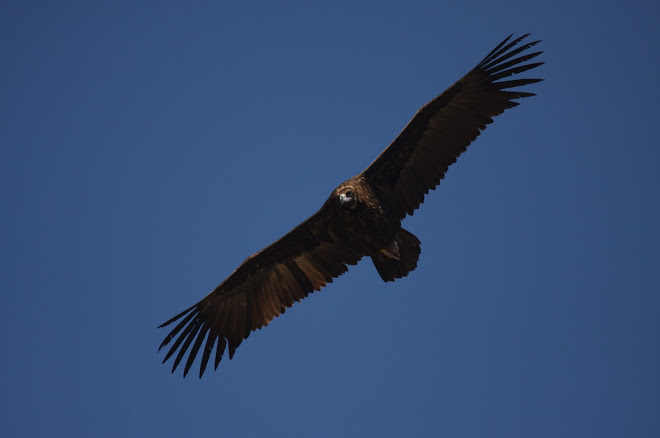 |
 |
In the Lleida Pre-Pyrenees (Catalonia, Spain), thanks to the reintroduction project, there is not only this coincidence but also all the four species breed in the same area.
The second milestone is having got the Black Vulture as a breeding species in the wild in these mountains just 3 years after the release of the first specimens, as well as three fledged chicks.
The third one, to increase in an exponential manner the flow of black vultures through the Pyrenees mountain range, creating a connection between the new French colonies (Cévennes, Baronnies) and the traditional ones from the South West of the Iberian Peninsula.
The fourth one is, thanks to this exchange, having got exogenous individuals settled in this incipient Pyrenean colony.
The fifth one? It would be, no doubt, getting a second generation of individuals born within the colony.
At the end of 2012, the colony has got five pairs of reproductive age and a total of 20 individuals. In the coming years we should double that number if we want to ensure the feasibility of the Pirenean colony, in the mid- and long-term. What is the main obstacle to make this happen? The lack of sufficient donated black vultures to be released. This is the bottleneck that has constrained the programme, as the estimated number of 10-12 individuals per year has been reduced to only 6 (38 in all).
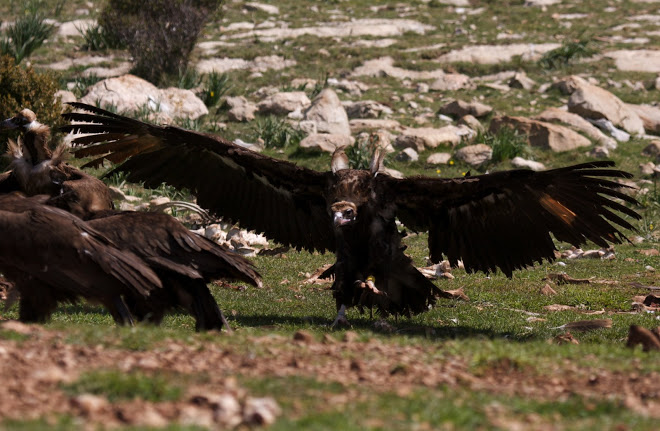 |
 |
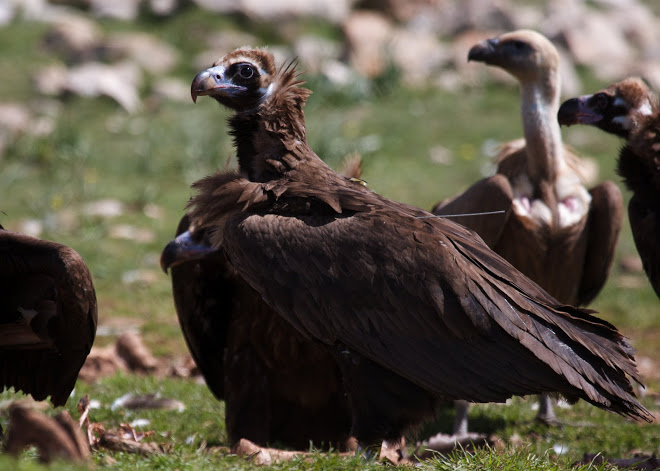 |
What or who, in spite of that constriction, made it posible to get those milestones? First of all, the capacity of the Black Vulture to recolonize its old habitats. Supported by the constancy and the expertise of a group of both public and private entities that, leaving aside their differences, focused their attention on what was crucial: to restore the Black Vulture as a breeding species in the Pyrenees.
This is why, from these few lines, we want to thank to the Generalitat de Catalunya (Catalan Autonomous Government) and the Fundació Catalunya-La Pedrera (Catalunya-La Pedrera Foundation), promoters of the programme. To GREFA and Trenca Associations, that are in charge of the rehabilitation, sanitary control, acclimatization, release, feeding and tracking of the individuals. To REE, whose sponsorship enabled us to mark the black vultures with terrestrial and GPS-satellite transmitters. To the Autonomous Communities of Extremadura, Valencia, Asturias, Castilla-La Mancha and Madrid, for the cession of individuals admitted into Wildlife Rehabilitation Centres (particularly to the W. R. C. of Los Hornos, in Cáceres, which has been the source of 2/3 of all the black vultures). To Modesto and the rangers of the National Hunting Reserve of Boumort, for their constant support in all works. To Víctor, specialist in marking from the MAGRAMA. And to all physical and legal entities that have understood the ecological relevance of this initiative and suported it, in public or in private.
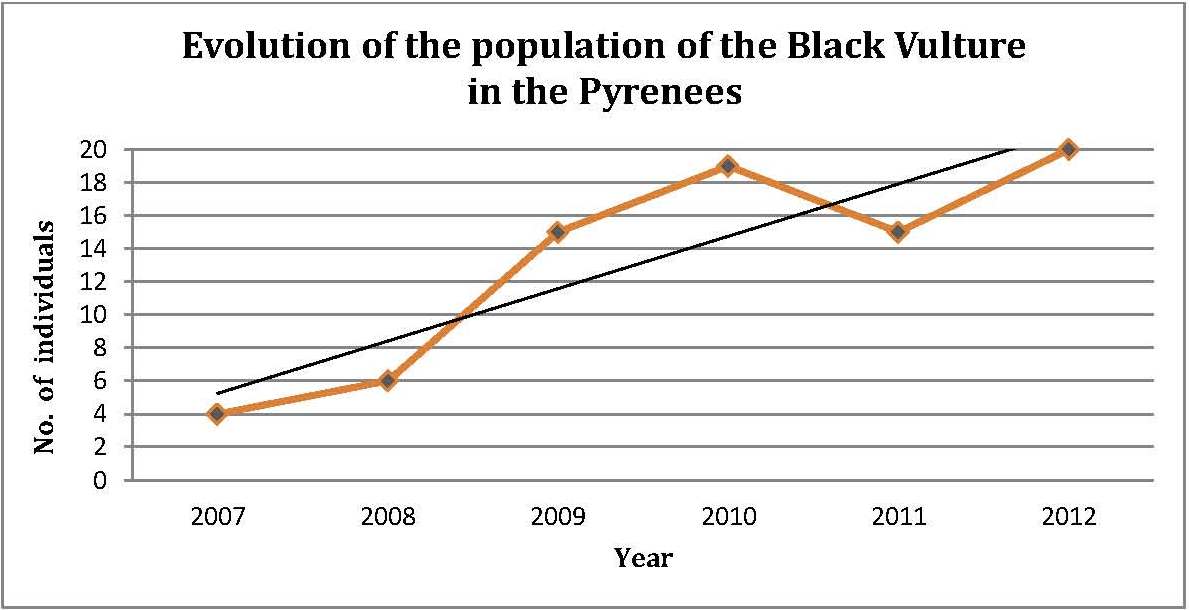
Boumort-Alinyà working team


